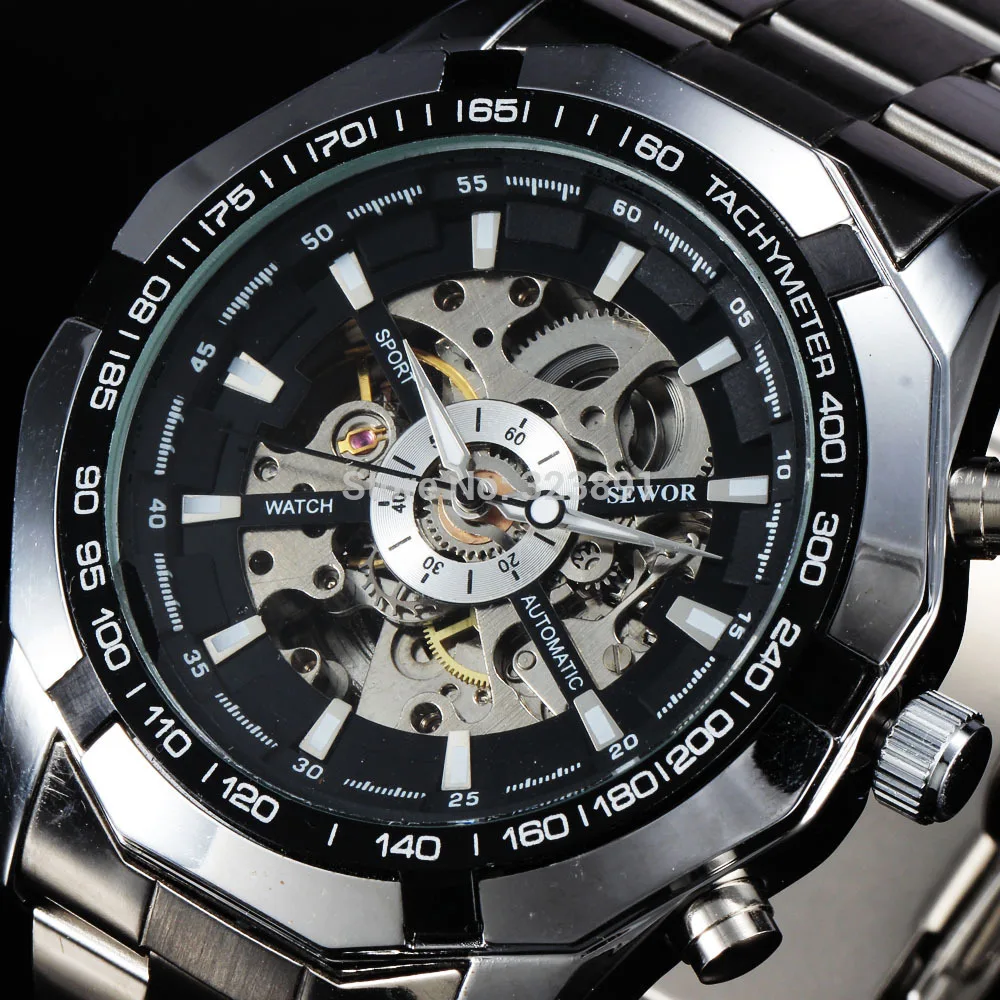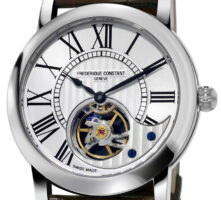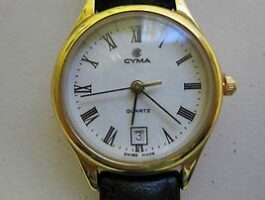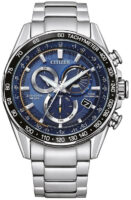



Swatch subsidiary ETA SA, which is based in Grenchen, Switzerland, furnishes many OEM brands, such as LVMH (which markets TAG Heuer, Hublot and Zenith watch lines) and Richemont (which markets amongst others.
The Swatch Group known as Société Suisse de Microelectronique & d’Horlogerie or SMH until 1998–is the world’s leading supplier of watch movements and finished watches, accounting for as much as 25 percent of total world production, while capturing more than ten percent of all watch sales. The Swatch Group is more than its flagship Swatch brand–which alone accounts for half of the company’s profits, and, in the late 1990s has given its name to a 15-store chain of retail Swatch Megastores.
The Swatch Group also includes many of the world’s most prestigious names in watch design, including Omega and Blancpain (luxury); Rado and Longines (high end); Tissot, Certina, Mido, Balmain, Hamilton, and Calvin Klein (mid); and FlikFlak, Lanco, and Swatch in the ‘basic’ or low-end market. In addition, the company’s exclusive Endura label crafts custom-designed watches.
In an era of increasing market segmentation, Swatch remains a tightly vertically integrated company, manufacturing not only watches, but their movements and motors and other basic components. The company produces components–through a range of subsidiaries, including ETA, itself Switzerland’s largest movements manufacturer–for much of the Swiss watchmaking industry, as well as for the member brands of the Swatch group. In total, Swatch has nearly 450 reporting business units, principally in Switzerland, but implanted throughout the world. Its 50 production centers are located in Switzerland, the United States, France, Italy, Germany, Thailand, Malaysia, China, and the Virgin Islands.
Beyond watches and their components, Swatch has long flirted with high technology, fabricating microprocessors, smartcard technology, portable telephones, and other future-oriented designs, such as wristwatches that double as telephones, credit cards, even concert tickets.
In October 1998, Swatch debuted its latest venture, or adventure, as some would have it: the Smart car, a project in partnership with the Daimler Benz corporation. The chief architect behind these projects and the Swatch group’s success has been Nicolas Hayek, who, at more than 70 years of age remains company chairman. Hayek is credited with leading Swatch from the bankruptcy of its founding companies to more than SFr 3.05 billion in annual sales in 1997.
Out of Time in the 1970s
Switzerland’s traditional dominance of the international watchmaking market foundered in the 1970s. The arrival of digital technology and the use of quartz-based timing in so-called quartz analog watches gave rise to a new breed of cheap Asian watches and to a new generation of giant Japan and Hong Kong-based industrial manufacturers. The Swiss market, with its tradition of small, often family-owned firms, and its continued focus on more expensive, labor-intensive mechanical movements, was caught by surprise by the gains made by such brands as Seiko and Citizen.
While Swiss watchmakers had been among the first to debut digital watches&mdash′iced at the high end of the market at their debut in the late 1960s–most of the Swiss industry considered these and quartz-based timing a fad that would swiftly pass. Instead, demand for these easily produced watches (in contrast to the meticulous craftsmanship needed for most mechanical watches) encouraged a whole new crop of worldwide competitors to enter the field. By the mid-1970s, the market had become glutted, prices plunged, and the entire industry underwent a crisis, even as demand for digital watches and their LED or LCD faces vanished. The appearance of the first quartz analog watches, which supplanted mechanical movements with quartz-based “modules” while retaining traditional analog watchfaces, however, would prove more enduring. Here again, however, the Swiss industry clung to mechanical movements, convinced that the quartz fad would soon end as well.
By the end of the 1970s, the Swiss watchmaking industry was in serious trouble. Many spoke of exiting the watchmaking market altogether, or limiting craft-based production to the high-end and luxury markets. Two of the largest Swiss watchmakers were among those facing collapse. Both Allgemeine Schweizerische Uhrenindustrie (ASUAG) and Societé Suisse pour l’Industrie Horlogère (SSIH) had been formed in the 1930s depression era, grouping, in SSIH’s case, such long-revered names in watchmaking as Omega and Tissot. Omega, founded in the mid-19th century, had achieved prominence as one of the world’s top luxury brands, with its mechanical watches and timepieces not only an Olympic Games standard, but also the choice of U.S. astronauts.
As French-speaking SSIH concentrated on watches, its German-speaking rival ASUAG focused on movements and other component parts, while also adding watchmaking subsidiaries and brands. By the 1960s, both ASUAG and SSIH were among the world’s largest watchmaking firms. ASUAG itself had built a position as one of the Swiss industry’s chief suppliers of movements and watch components. Yet, by the beginning of the 1980s, faced with an onslaught of cheaply produced quartz-based and digital watches, both ASUAG and SSIH were facing bankruptcy proceedings. In addition to the glut of cheap watches, ASUAG and SSIH had suffered from important economic factors: the devaluation of the U.S. dollar in the mid-1970s vastly increased the cost of importing Swiss watches into what had been one of the industry’s chief marketplaces; at the same time, Switzerland could not hope to compete with the low wage and production costs available in the Far East.
In the late 1970s, both companies, joined by the Swiss industry as a whole, attempted to reverse their fortunes, investing massively in quartz module production facilities. By the end of the decade, the industry had succeeded in bringing all quartz component manufacture needs within the country’s borders. ASUAG had been among the earliest to adopt this new manufacturing trend, and had succeeded in becoming an important supplier of quartz movements. Yet the move proved too late. As the decade closed, more than half of the 1,600 Swiss watchmakers present at the start of the decade had gone out of business. SSIH, which had become the country’s largest watchmaker, was bleeding: after suffering large losses in 1980, it received a US$150 million bailout from its banks. Nevertheless, its losses continued.
By 1982, it was the turn of ASUAG and SSIH to face liquidation procedures. Foreign competitors hovered around the two companies, eager to buy up such famous watch brands as Longines, Hamilton, Tissot, Rado, and Omega. Observers of the Swiss industry seemed resigned to see watchmaking fade into the fabric of Swiss history.
The Hayek Era of the 1980s
Many credit the survival of ASUAG and SSIH’s operations to the actions of one Nicolas Hayek. (Hayek himself would claim to have rescued the entire Swiss watchmaking industry, to the indignation of many of his competitors.) Hayek was the head of Hayek Engineering, which had built a reputation in the 1970s as a leading manufacturing consultant. In 1982, Hayek was hired by ASUAG and SSIH’s creditors to investigate the Swiss watchmaking industry and, as Hayek claimed, “produce a report saying it’s impossible to produce in Switzerland because the Japanese are much cheaper, labor is cheaper” (European, June 19, 1997).
Despite the banks’ desire to shut down the Swiss watchmaking industry, and sell off its jewels to recoup some of their losses, the so-called Hayek Study would lead the Swiss industry into a new era. Chief among Hayek’s recommendations was to merge the two longtime rivals into a single company. Hayek’s second recommendation proved perhaps still more radical: the production of a new type of watch directed at the low-cost (under US$50) watch market. The banks agreed to the merger, creating the ASUAG/SSIH entity in 1983. But the banks refused Hayek’s idea for the new type of watch. Instead, they offered to sell 51 percent of the merged company to Hayek for SFr 151 million. Hayek accepted the gamble, renaming the company as Société Suisse de Microelectronique & d’Horlogerie, or SMH.
Hayek counted on an innovation made by the company’s ETA watch movement subsidiary, led by Ernst Thomke. At the height of the watch market explosion in the 1970s, a great deal of competition had focused on making the thinnest watch in the world. ETA would win, developing the technology to produce a watch that was less than 1 mm in thickness. The watch, marketed as the Delirium, proved a success, with sales of more than 5,000, despite a price tag of nearly US$5,000. At the start of the 1980s, Thomke’s attention too turned toward rescuing not only parent company ASUAG but also SSIH, as a means of rescuing ETA itself–the failure of these two watchmaking powerhouses would mean the failure of ETA as well. Thomke devised a radically new watch concept, based on the technology developed for the Delirium, and to be manufactured entirely by automated production methods. It was this concept that Hayek brought to SMH’s creditors as the means to rescue the newly merged company.
This watch was, of course, the Swatch. More than a watch, the Swatch represented a entirely new marketing concept, featuring colorful designs and flashy advertising that not only broke from the conservative mold of the Swiss industry, but also caught its Asian competitors entirely off guard. Greeted by industry skepticism, the Swatch proved a huge success. The automated production process had succeeded in keeping costs down, propelling SMH into profitability by mid-decade. By 1986, SMH’s revenues had climbed to SFr 1.25 billion. The Swatch’s colorful designs encouraged customers to purchase multiple watches–and inspired an entire collecting craze consciously fueled by the company itself. In the late 1990s, rare Swatch designs would sell for nearly US$20,000–for a watch that cost less than US$50 when it was first produced.
The Swatch success would inspire the Swiss watchmaking industry as a whole; meanwhile, SMH scored a new hit in the second half of the decade with the introduction of the RockWatch, again conceived by Thomke, and released by SMH brand Tissot. Similarly, SMH introduced the children’s watch Flik Flak, inspired by the Swatch with its multiple designs. SMH’s success proved infectious for its other units, as brands such as Omega and Hamilton revitalized and refocused. Not all of SMH’s initiatives were so fortunate: the company’s attempt to move into merchandising, introducing a line of Swatch-inspired clothing and accessories, and a chain of in-store Swatch Boutiques, met with little interest. The company abandoned this project and returned its focus to watches and watch movements.
Industry Leadership in the 1990s
By the beginning of the 1990s, SMH was well on its way to becoming the world’s largest producer of watches and watch movements. Under Hayek and Thomke, the company had made substantial gains, and the once scoffed at Swatch had sold more than 250 million watches worldwide. Thomke left the company in 1991, after helping reestablish such brands as Tissot, Rado, and Omega. These brands were joined by the 1991 acquisition of the renowned Blancpain brand of luxury watches. The Swatch success story seemed to have a strange side effect: renewed interest in mechanical watches, and especially in the high end and luxury category of watches.
Hayek, meanwhile, was already looking in new directions for SMH. In the 1990s, the company would begin investigations on entering the portable telephone market–with announcements of a Swatch watch with built-in telephone. Hayek had also begun searching for a partner for a project that seemed as radical as the Swatch had been: a new type of car. The so-called Swatchmobile was to be an ecologically friendly vehicle based on a new type of car engine–inspired in part by watch technology. SMH originally entered an agreement with Volkswagen to begin designing the proposed automobile. This agreement fell through, however.
In the mid-1990s, SMH found a new partner for its Swatchmobile in Daimler Benz. In 1994 the two companies announced the creation of the joint partnership Micro Compact Car for the production of the Smart car. Initially scheduled for shipping in October 1997, the Smart car would finally enter production in June 1998, with initial sales in October 1998. The car’s minuscule design and Swatch-like design features, as well as an innovative sales approach, caused a sensation at its launch.
The late 1990s would bring to fruition other of SMH’s projects. In May 1998, the company planned to launch its Swatch Talk, a new Swatch design featuring a built-in portable telephone. The Swatch Talk was joined by two other products–the Swatch Telecom and Swatch Access–designed to launch the company into the telecommunications market at a time of the European market’s deregulation. SMH also began building a new distribution channel for its expanding Swatch brand, opening the first of a proposed 15-store chain of Swatch Megastores in New York and Geneva.
In 1998, SMH adopted the new name of the Swatch Group in recognition of its world-renowned product. The company had grown into an industry powerhouse representing more than 25 percent of total watch and watch component sales, while capturing ten percent of global watch revenues. The Swatch Group, with its forays into automobile production and telecommunications, had also developed a strong vertically integrated organization, producing the full range of watches and watch components, including batteries and microprocessors. In 1997, Swatch posted revenues of SFr 3.05 billion, and net profits of SFr 332 million.
Principal Subsidiaries: Finished Watches: Blancpain; Omega; Longines; Rado; Tissot; Calvin Klein; Certina; Mido; Hamilton; Pierre Balmain; Swatch; Flik Flak; Lanco; Endura. Watch, Movement, and Component Production: ETA, Habillage; Frédéric Piquet; Renata; Comadur; Nivarox-FAR; SMH Assembly. Microelectronics, Components, and Systems: EM Microelectronic-Marin; Oscilloquartz; Micro Crystal; Omega Electronics; SMH Autombile.
Other Subsidiaries: Asulab; CDNP; ICP; LASAG; Columna; Swiss Timing; SMH Real Estate; Swatch Telecom; Micro Compact Car (50%).
The Swatch Group Ltd is a Swiss company and watch manufacturer. It was formed in 1983 through the merging of the two Swiss watch manufacturers ASUAG and SSIH, and took its present name in 1998 (formerly SMH Swiss Corporation for Microelectronics and Watchmaking Industries Ltd)
The Swatch Group formed from two financially troubled predecessor companies:
SSIH originated in 1930 with the merger of the Omega and Tissot companies. Swiss watch quality was high, but new technology such as the Hamilton Electric watch introduced in 1957 and the Bulova Accutron tuning fork watch introduced in 1961 presaged increasing high technology competition.
In the late 1970s SSIH became insolvent due in part to a recession and in part to heavy competition from inexpensive Asian made quartz crystal watches. These difficulties occurred even though it had become Switzerland’s largest and the world’s third largest producer of watches. Its creditor banks assumed control in 1981.
ASUAG, formed in 1931, was the world’s largest producer of watch movements and the parts thereof (Balance wheels, Balance Springs (Spiral), Assortments, Watch Stones (“rubis”). ASUAG had also integrated an array of Watch brand in 1972 into a sub holding company, General Watch Co.
ASUAG failed similarly in 1982.
Both groups were reorganized and merged into SSIH/ASUAG Holding Company in 1983. Taken private, in 1985, by then CEO Nicolas Hayek, with the understanding of the Swiss Banks and the financial assistance of a group of Swiss private investors, it was renamed SMH in 1986, and ultimately Swatch Group Ltd in 1998.
The launch of the new Swatch brand “Swatch” watch in 1983, by the then ETA SA CEO Ernst Thomke and his young team of engineers, was marked by bold new styling and design. The quartz watch was redesigned for manufacturing efficiency and fewer parts. This combination of marketing and manufacturing expertise restored Switzerland as a major player in the world wristwatch market.
https://en.wikipedia.org/wiki/The_Swatch_Group
https://www.watch-wiki.net/doku.php?id=asuag
Please remember that this is an unofficial account of the history of this company, Should you happen to find any mistakes with our information then please let us know at



